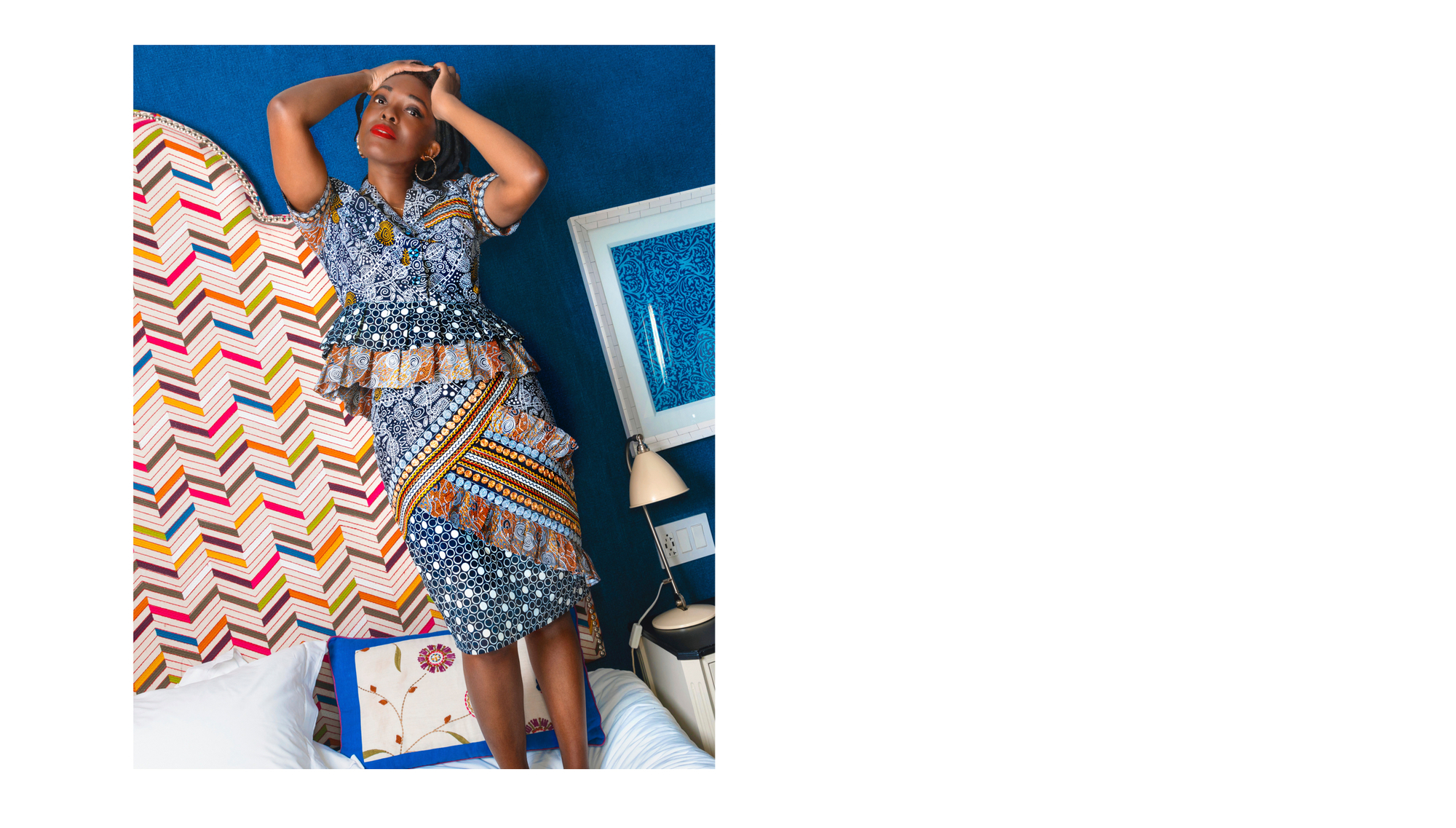
If 2020 has left most of us with a deep hankering for a proverbial ray of sunshine—then Autumn Adeigbo, a name new to Moda in Trunkshow this season—couldn't have come at a better time. Inspired by African culture, the Nigerian-American designer marries a business ideology aimed to empower women with a bold and vibrant aesthetic. Born in upstate New York and raised in the Midwest, Adeigbo (pronounced “A-dayg-bo”) likes to credit her Nigerian mother—who made all of her clothes for her when she was a little girl, earning her the modest title of “best-dressed” in fourth grade—with shaping her aesthetic.
After being selected as a fellow for the Tory Burch Foundation in 2019 (Burch, whom she first met in 2011, is a longtime mentor of hers), Adeigbo became the first Black woman to raise over one million dollars in capital for a fashion line in 2020. Yet what motivates her most—far more than making beautiful clothes—is the opportunity to empower women all over the world through her brand. “From the beginning, I’ve always wanted to give back—otherwise it wasn’t worth it to me,” she says. Adeigbo is part of a new breed of designers who prioritize a more holistic, entrepreneurial approach to building brands. From the get-go, she’s been committed to working with women: she uses female-owned factories in the U.S. to produce her clothing and has employed female artisans from all corners of the globe to bring her clothes to life with finely-crafted details steeped in local and traditional craftsmanship.
Below, Adeigbo shares her hard-won success story and how she hopes to make a difference.
ON HER FIRST INSPIRATION—HER MOM…
She just has this incredible dress style, she loves animal print—that’s where I get that from. She’s got an incredible artistic sense—in both fashion and interiors. I look at all these pictures of myself from when I was a little girl and I’m just like, oh my god, I’m dressed to the nines. I know that’s because of her.
ON HOW SHE “MADE IT”...
It took me 20 years, hustling every day and putting myself in environments with people I wanted to be a part of my network. I followed my passions, assisting celebrity fashion stylists and freelancing at “W” magazine. I also hostessed at “hot” NYC restaurants and was a sales rep for luxury retail stores. Most importantly, I worked hard and never considered any job to be “below” me—which is ultimately what made it happen. For example, I worked as a temp doing construction project management in NYC and, even though it wasn’t my passion, I put my heart into learning how to do it well. Six months after leaving that job, my best client there became my biggest investor to date. He knew firsthand my commitment to hard work, and ended up investing six figures in my business without ever meeting me in person.
ON THE ARTISANS SHE WORKS WITH AROUND THE WORLD…
I’ve worked with artisans in both India and countries in Africa—specifically, Kenya, Ghana, and Rwanda for our hand embellishments. In Kenya, [I worked with] women of the Maasai tribe, who are known for their beadwork—it’s part of their heritage. I hired artisans in Rwanda, who are known for making those beautiful, graphic and intricate, decorative raffia and sisal bowls you sometimes see hanging on walls. And in India, I’ve partnered with female-owned factories that specialize in hand-embroidery and hand-beading, for my line of headbands.
“Making money—and only making money—isn’t what brings me joy. I want to try to make a difference.”
ON HER SIGNATURE HEAD-TURNING PRINTS…
I’m a first-generation Nigerian so African textiles are part of my heritage—I often source them on my travels. It can be a fabric store, or one of our mills, which are located in Italy, France, the U.K., and Spain. We’ll be introducing knitwear that’s made in Peru in the Fall collection. Overall, I like to use African prints that are often hand-batiks originally from Ghana.
ON THE MESSAGES SHE HOPES TO CONVEY WITH HER CLOTHING…
I want people to see fashion as fun, lighthearted, and joyful. You know, I worked in fashion [before starting my line], and I remember wanting to have fun, but I wasn’t. It really made me think: why do people take fashion so seriously? I mean, of course I believe in certain silhouettes—I tend to gravitate towards classic shapes with a twist, ones that will still be relevant in 10, or 20 years’ time. I believe in the right balance of things, how the length of a skirt can really affect a dress, and of course, the fabrications are always really important. It is serious in some respects, but I want the women who wear my clothes to be not only chic—but joyful too.